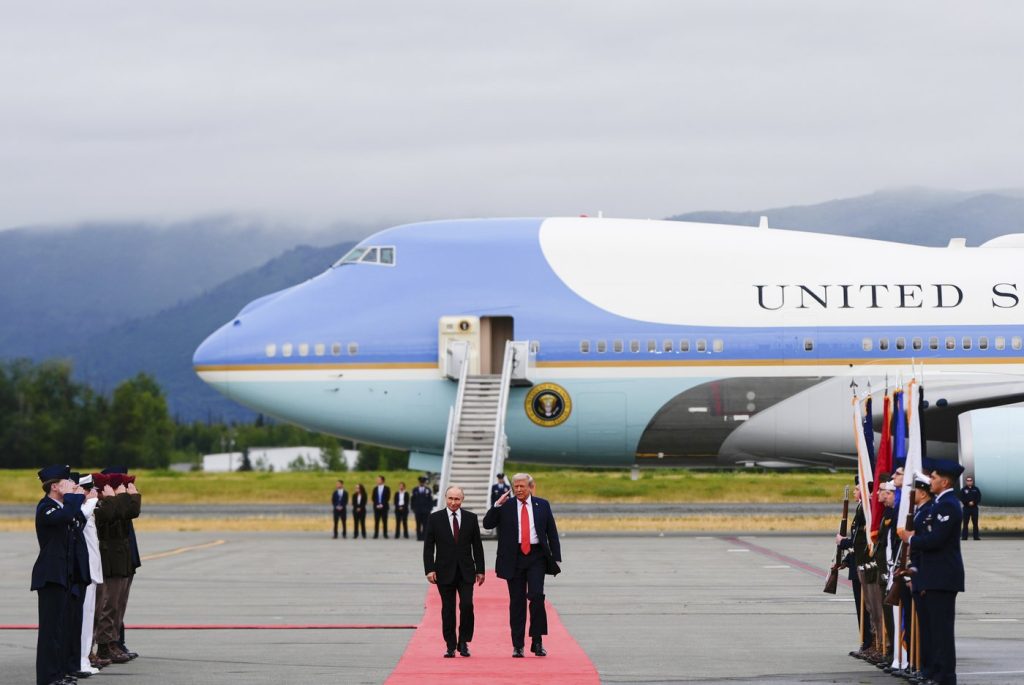In August 2025, President Vladimir Putin made his first visit to the United States in a decade, stepping onto a red carpet in Alaska for a summit with American President Donald Trump. This meeting came at a time when U.S.-Russia relations were at a low, following the 2022 invasion of Ukraine and subsequent crippling sanctions against Russia. Trump praised the bilateral relationship, calling Russia "a big power... No. 2 in the world," although he acknowledged that no agreements were reached to end the ongoing conflict in Ukraine.
As the summit concluded, reports indicated that Trump seemed to shift focus from a ceasefire to a full-fledged "Peace Agreement" to resolve the war, a stance that closely mirrored the Kremlin's long-standing position. Despite previous threats of "severe consequences" against Russia for its continued military actions, such repercussions remained absent as Russian forces continued to advance on the battlegrounds in Ukraine.
The hastily arranged summit was perceived critically by some observers. Laurie Bristow, a former British ambassador to Russia, noted that the event yielded little for Trump while giving Putin much of what he sought. Analysts characterized the summit as a "pomp-filled reception" that allowed Putin to escape his international isolation and assert himself on the world stage without facing significant challenges from the U.S. president. Throughout the meeting, Trump notably ignored the International Criminal Court's arrest warrant for Putin on war crimes, further elevating the Russian leader's stature.
Putin's main objective at the summit appeared to be delaying any pressure for Russia to withdraw from Ukraine. Analysts like Neil Melvin from the Royal United Services Institute suggested that Putin considered the summit a success. While Trump had previously advocated for a ceasefire, he later echoed the Kremlin's stance in his social media comments, emphasizing the need for a peace agreement rather than a temporary truce that could easily dissolve. The response from European leaders following Trump's remarks remained vague, raising questions about their official position regarding ceasefire versus peace agreements.
Media outlets supportive of the Kremlin regarded the summit as a significant diplomatic victory for Putin, interpreting Trump's shift as a means for Russia to consolidate territorial gains. This was particularly relevant given the backdrop of a recent deadline set by Trump for Russia to halt its military actions or face additional sanctions on oil exports. Although Trump threatened severe consequences for non-compliance prior to the meeting, he later downplayed the urgency of these threats in subsequent interviews.
Following the summit, Putin claimed that there was an "understanding" reached between the two leaders about Ukraine. However, Trump was quick to clarify that no formal agreement had been established, suggesting instead that the responsibility for moving forward lay with Ukrainian President Volodymyr Zelenskyy, with some support from European nations. The Kremlin, on the other hand, has maintained its demands that Ukraine cede territory occupied by Russia and renounce its intention to join NATO.
Despite the diplomatic theater in Alaska, Russia continued its military operations in Ukraine, demonstrating its ongoing intention to secure military advantages. The Russian Defense Ministry reported taking control of key villages, while Ukraine's defense forces worked tirelessly to intercept attacks. Analysts like Bristow expressed skepticism that fighting would cease until Putin was fully convinced of a military defeat. This perspective highlighted the contrasting realities of summit diplomacy against the backdrop of escalating military tensions in the region.










